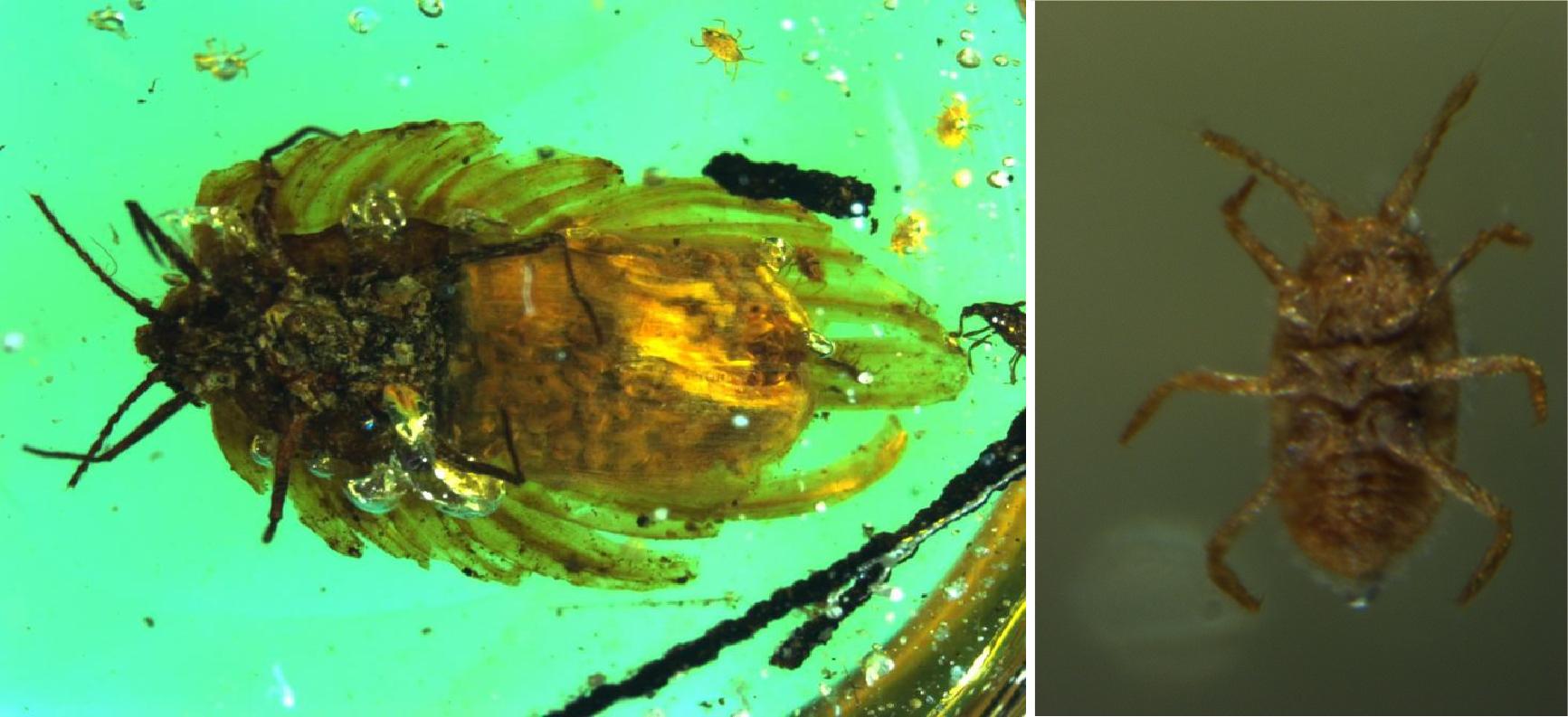Many animals care for and protect their offspring to increase their survival and fitness. Insects care for their young using a range of strategies: some dig underground chambers for their young, whilst others carry their brood around on their own bodies. However, it was unclear when these strategies first evolved in insects.
Professor ZHANG Haichun from Nanjing Institute of Geology and Palaeontology, Chinese Academy of Sciences and his team, reported the earliest fossil evidence of an insect caring for its young, in the form of a female insect preserved with her brood in a specimen of ancient amber. The amber comes from northern Myanmar, where amber deposits are around 95–105 million years old. The fossilised insect is an adult female scale insect with a cluster of around 60 eggs on her abdomen. Six young scale insect nymphs are also preserved in the same piece of amber. They named this newly discovered species Wathondara kotejai, after an earth goddess in South-East Asian Buddhist mythology and the late Polish entomologist Jan Koteja.
Most scale insect fossils found to date have been males. Fossilised adult females are scarcer, most likely because female scale insects are wingless and less mobile and therefore less prone to accidental burial. The fossil is therefore a rare find, and it is also sufficiently well preserved to reveal that the female’s eggs are contained within a wax-coated egg sac. Today there are many species of scale insects, most of which are parasites of plants and many are economically important pests of trees and shrubs. In living relatives of W. kotejai, females use a similar wax coating to protect themselves and their offspring: young nymphs hatch inside the egg sac and remain there for a few days before emerging into the outside world.
This new fossil provides a unique insight into the anatomy and life cycle of a long-extinct insect; it also demonstrates that brood care in insects is an ancient trait that dates back to at least around 100 million years ago at the height of the age of the dinosaurs.
This research was supported by Chinese Academy of Sciences, National Basic Research Program of China, and State Key Laboratory of Palaeobiology and Stratigraphy (NIGPAS), and Alexander von Humboldt-Foundation.
The paper was published in eLife (Wang Bo, Xia Fangyuan, Wappler T., Simon E., Zhang Haichun, Jarzembowski E.A., Szwedo J. (2015) Brood care in a 100-million-year-old scale insect. eLife, 4: e05447).

The fossilied insect and the six young scale insect
(Information Source: Nanging Institute of Geology and paleontology, CAS)

